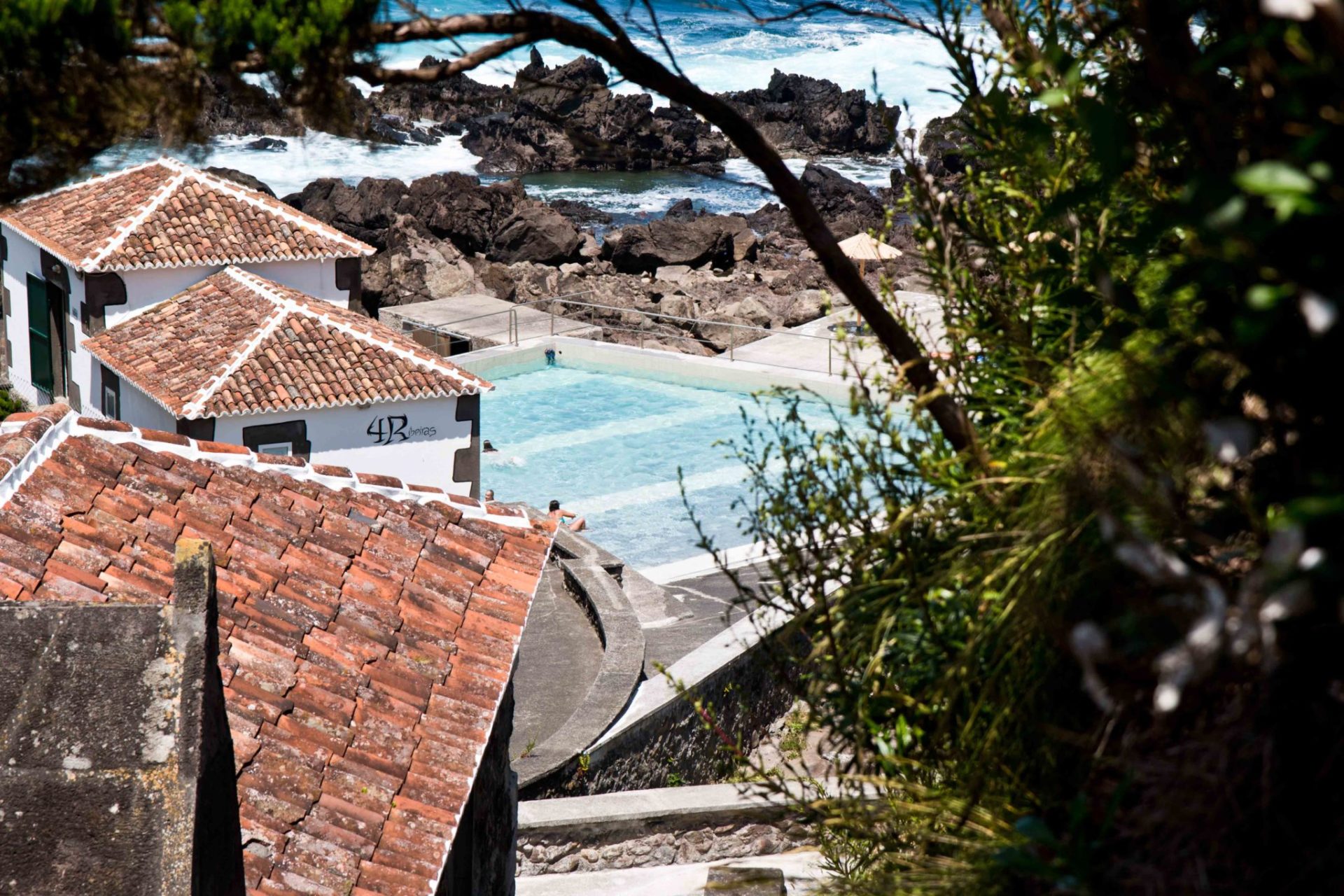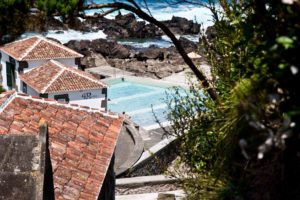It has a swimming pool for children, as well as a natural swimming pool open to the sea. Along the steep coast, several waterfalls are visible. Located on the north coast of the island, in a place characterized by volcanic formations of a trachytic nature, which comprise the island’s eruptive activity over the last 23,000 years. Nearby, a water mill is still preserved, a sign of the importance of water courses in this parish and on the island, for the transformation of cereals into flour. Given its importance in geological terms, marine fauna, avifauna and flora, this area is one of the geosites of the Azores Geopark – UNESCO World Geopark, bordering a Protected Marine Resource Management Area, constituting a Special Conservation Area (ZEC ), within the scope of the Natura 2000 Network and is part of an Important Area for Birds and Biodiversity (IBA), of the organization BirdLife International. In Flora: Spergularia azorica, Erica azorica (heather), Myosotis maritima (forget-me-not), Rumex azoricus (island dove) and the emblematic Azorina vidalii (vidalia).
As for the avifauna: Calonectris borealis (cagarro), Sterna hirundo (common tern) and, occasionally, species such as Ardea cinerea (heron), Calidris alba (beach sandpiper) and Charadrius alexandrinus (collared plover). interrupted).



